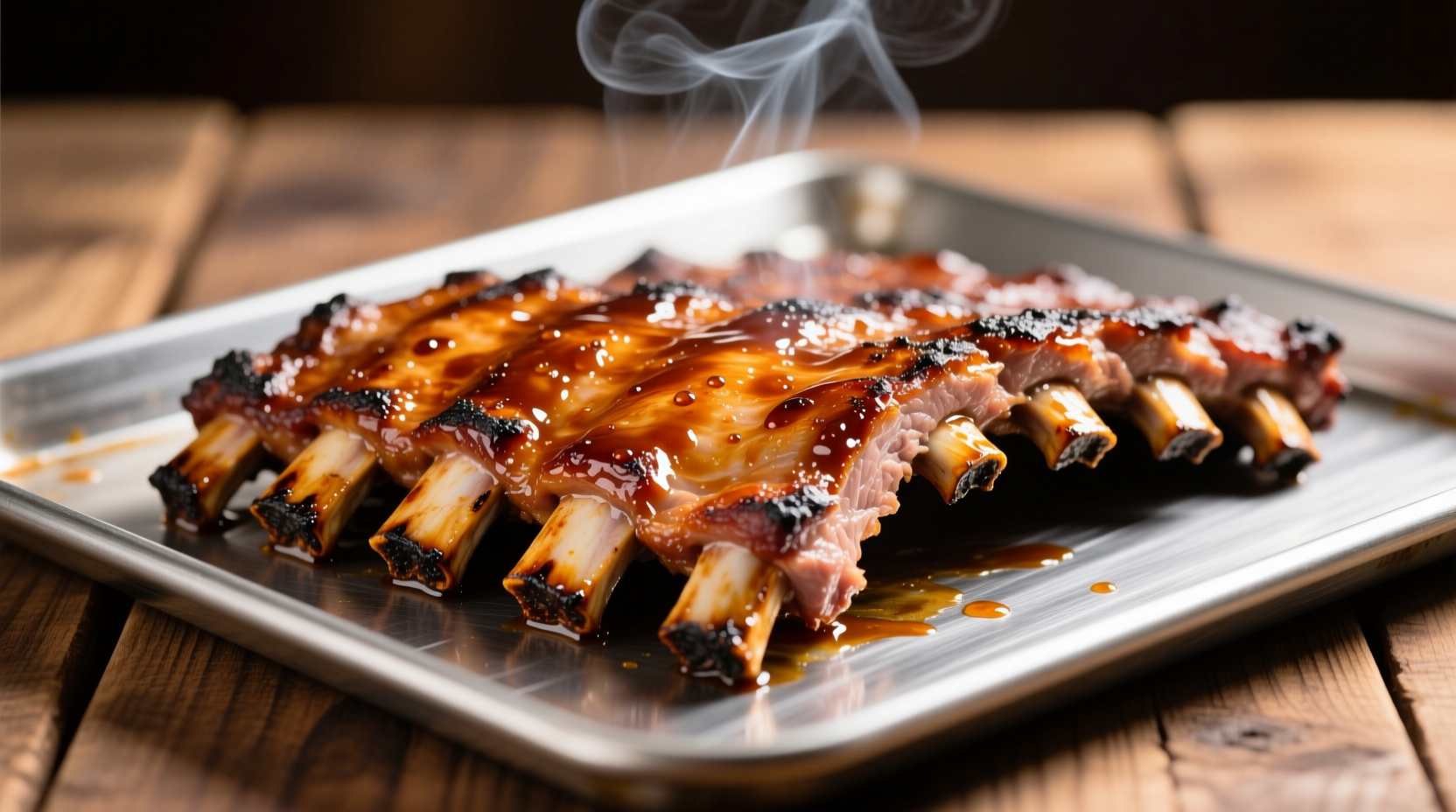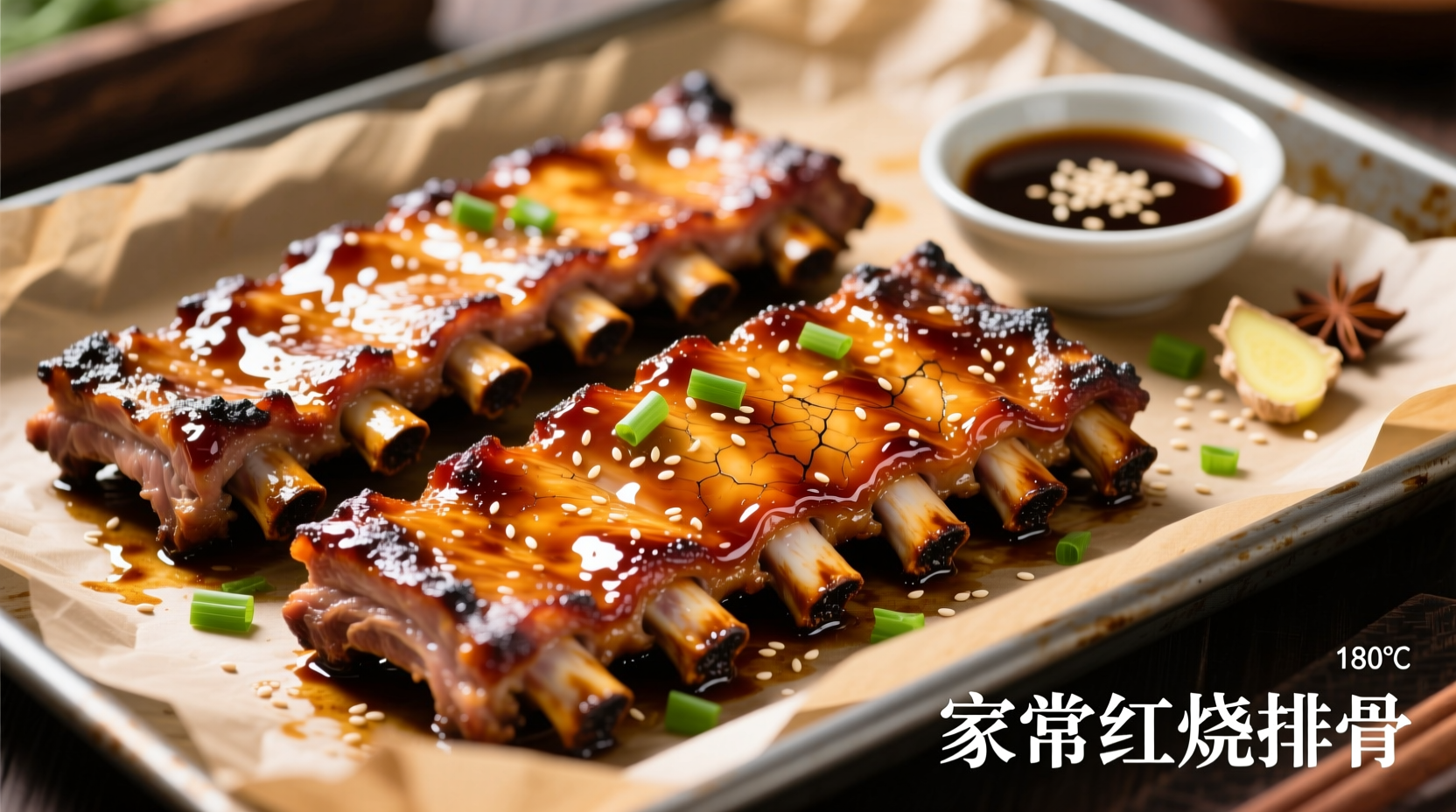Nothing beats the satisfaction of serving perfectly cooked pork ribs straight from your oven. Whether you're preparing for a special dinner or craving that signature barbecue flavor without firing up the smoker, this comprehensive guide walks you through every step to achieve restaurant-quality results. Forget dry, tough ribs—our method ensures juicy, tender meat with just the right amount of caramelization every time.
Essential Preparation: Setting Up for Success
Before you even preheat your oven, proper preparation makes all the difference in oven-baked ribs. Understanding rib types and having the right tools ensures you start with the best possible foundation.
| Rib Type | Characteristics | Cooking Time | Best For |
|---|---|---|---|
| Baby Back Ribs | Smaller, leaner, more tender | 2-2.5 hours | Beginners, quicker cooking |
| Spare Ribs | Larger, fattier, more flavorful | 2.5-3 hours | Traditional barbecue experience |
| St. Louis Style | Cut from spare ribs, uniform shape | 2.5 hours | Even cooking, presentation |
For equipment, you'll need:
- Heavy-duty aluminum foil (double layer recommended)
- Baking sheet with wire rack (elevates ribs for even cooking)
- Instant-read thermometer (critical for perfect doneness)
- Sharp boning knife (for membrane removal)
The Perfect Oven Rib Timeline: Step-by-Step Process
Follow this precise cooking sequence for ribs that impress every time. The timeline below shows the progression from raw to restaurant-perfect:
| Phase | Temperature | Duration | Critical Actions |
|---|---|---|---|
| Preparation | N/A | 20 minutes | Remove membrane, apply rub, rest |
| Low & Slow | 275°F (135°C) | 2.5 hours | Wrapped in foil, meat-side up |
| Finishing | 375°F (190°C) | 15-20 minutes | Unwrapped with sauce, broil briefly |
| Resting | Room temp | 10-15 minutes | Covered loosely, essential for juiciness |
Preparation: The Foundation of Flavor
Start with quality ribs from a reputable butcher if possible. The USDA Food Safety and Inspection Service recommends selecting ribs with consistent pink color and minimal liquid in the package. Remove the tough membrane on the bone side using a sharp knife to lift an edge, then grip with a paper towel and peel away completely—this crucial step allows seasoning to penetrate and prevents curling during cooking.
Apply a generous dry rub (3 tablespoons per rack) using this professional ratio: 2 parts brown sugar, 1 part paprika, 1 part garlic powder, ½ part each of salt, black pepper, and onion powder. Let the seasoned ribs rest uncovered in the refrigerator for at least 1 hour, or ideally overnight, to develop deeper flavor penetration.

Low & Slow Cooking: Achieving Tender Perfection
Preheat your oven to 275°F (135°C)—this precise temperature is critical for collagen breakdown without drying. Place ribs meat-side up on a double layer of heavy-duty foil with ¼ cup apple juice or broth in the bottom. Wrap tightly to create a sealed pouch that traps steam, then place on a wire rack set over a baking sheet.
Cook for 2.5-3 hours until the internal temperature reaches 195-203°F (90-95°C). At this stage, the collagen has fully converted to gelatin, giving that signature fall-off-the-bone texture. The USDA recommends a minimum internal temperature of 145°F (63°C) for pork safety, but ribs require higher temperatures for proper texture development.
Finishing Touches: Creating That Signature Glaze
Remove ribs from foil (reserve any juices for sauce enhancement) and place back on the rack. Brush generously with your favorite barbecue sauce and increase oven temperature to 375°F (190°C). Return to oven for 15-20 minutes until sauce caramelizes but doesn't burn. For extra gloss, broil for the final 2-3 minutes watching closely to prevent charring.
Allow ribs to rest for 10-15 minutes before slicing between bones. This resting period lets juices redistribute throughout the meat—skipping this step causes precious moisture to escape when cut.
Troubleshooting Common Rib Problems
Even with careful preparation, oven ribs can present challenges. Understanding these context boundaries helps you adapt:
- Dry ribs: Usually caused by insufficient moisture during cooking or overcooking. Solution: Add more liquid (apple juice, broth) to the foil pouch and reduce cooking time by 15-20 minutes.
- Tough texture: Indicates undercooking or membrane not properly removed. Solution: Return wrapped ribs to oven for additional 30-45 minutes at 275°F.
- Burning issues: Often happens during finishing phase. Solution: Lower oven rack position, reduce finishing time, or create a foil shield over delicate areas.
- Oven variation: Home ovens frequently have hot spots and inaccurate thermostats. Solution: Use an independent oven thermometer and rotate baking sheet halfway through cooking.
Serving and Storage: Maximizing Your Results
Serve ribs immediately after resting for best texture. Pair with classic sides like coleslaw, cornbread, or roasted vegetables. Leftovers store well in an airtight container in the refrigerator for 3-4 days. For optimal reheating, wrap individual portions in foil with a splash of broth and warm at 250°F (120°C) for 20-25 minutes—this preserves moisture far better than microwave reheating.
Frequently Asked Questions
Can I cook ribs without foil? Yes, but results differ significantly. Foil creates a steam environment that tenderizes connective tissue faster. Without foil, increase cooking time by 30-45 minutes and monitor closely to prevent drying.
How do I know when ribs are done? The bend test is most reliable: lift ribs with tongs—the meat should crack slightly but not separate. Internal temperature should read 195-203°F (90-95°C), and bones should pull away slightly from the meat.
Should I flip ribs during cooking? No need when using the foil-wrapping method. The steam environment cooks evenly from all sides. Flipping could disrupt the protective foil seal and release precious moisture.
Can I use a convection oven? Yes, but reduce temperature by 25°F (15°C) and check 15-20 minutes early. Convection ovens circulate hot air, accelerating cooking and potentially drying ribs if not adjusted.











 浙公网安备
33010002000092号
浙公网安备
33010002000092号 浙B2-20120091-4
浙B2-20120091-4